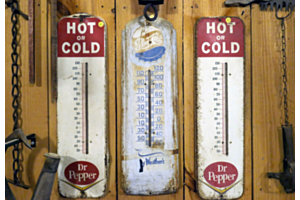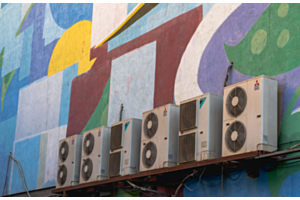Monthly Archives: August 2022
-
August 31, 2022
You’ve heard so many things about ductless mini splits, and your neighbor recently got one installed and hasn’t stopped raving about it.
That said, for as long as you’ve owned a house, you’ve always used traditional HVAC systems such as a heater or furnace or a central air conditioner (or maybe even window units). A ductless mini split would be a big change, and you’re reluctant to make the jump.
Are mini splits really a good idea?
They most certainly are, so let’s talk about the benefits of ductless mini splits now.
Energy Efficiency
Everyone is all too aware of their carbon footprint these days. You try to reduce your carbon footprint whenever you can by recycling and not wasting water, but there’s more you could be doing.
Your HVAC units are sucking up so much more energy than you realize. By upgrading to a ductless mini split system, you’re making an eco-friendly decision you can feel good about
-
August 24, 2022
The last you checked, your ductless mini split system was supposed to both heat or cool your home. The heat function is working fine, but the cooling? It’s just not happening.
You hear your mini split turn on, and you feel some air coming out, but the air feels lukewarm at best. What’s going on?
This is many times do to a refrigerant leak but could also be due to a 4-way valve, a wire problem, and many other issues.
Refrigerant, which is also known as freon, is a common fluid in air conditioning systems, including your mini split cooling system.
Here’s how refrigerant should work. The refrigerant travels throughout your mini split system and absorbs the heat from your home. During this time, the refrigerant transforms into a low-pressure gas.
The gas becomes compressed, which increases its pressure as well as its temperature. The refrigerant, still in its gas form, travels throughout the mini split’s coils.
As the refrigerant’s
-
August 17, 2022
Your ductless mini split needs a vacuum pump for its installation, a device that can pull gas and air molecules into a sealed area. Most vacuum pumps have two jobs, sealing and cleaning.
In the case of the mini split vacuum pump, it will recover refrigerant gases, which you’re often legally mandated to do.
Even if your state or city doesn’t have any sort of such legislation, you shouldn’t want refrigerant remaining in your mini split system. The refrigerant, when left to linger too long, can mix with moisture and begin to corrode. That corrosion can spread to other parts of your mini split system as well, causing real trouble.
You want a functioning vacuum pump for your mini split system, but you have no idea what size pump is the most appropriate.
To answer that, you first need to know the cubic feet per minute or CFM. The vacuum pump CFM is the capacity
-
August 10, 2022
You were sure you were going to get a multi split for your home’s heating and cooling needs, then you became familiar with ductless mini splits. Now you feel torn.
Both solutions seem to offer excellent cooling and heating potential, but what are the differences between a mini split and a multi split?
Let’s explore!
Mini Splits 101
A mini split is part of a ductless mini split system that includes two main components. They are the compressor aka the condenser and the indoor air-handling unit(s).
The compressor goes outside on your lawn. It’s positioned on a slab of concrete and away from direct sunlight and other weather exposure.
Linking the compressor to the air-handling unit is copper tubes.
Each time you turn your mini split on to heat or cool your home, refrigerant within the compressor will travel through the copper tubes to the air-handling unit to either warm or cool the air to the appropriate degree.
-
August 03, 2022
One of the greatest advantages that a ductless mini split system has over traditional HVAC is its heating and cooling efficiency. In today’s post, we want to introduce you to dual-zoned mini splits.
What Is a Dual-Zoned Mini Split?
Ductless mini split systems heat or cool according to zones.
A zone is defined as an area of a home or commercial building that needs specialized cooling or heating.
For example, if a section of your home had old windows, that room would be especially chilly in the winter since the drafty windows allowed cold air in. In the summer, the area would be hotter.
That might be one zone of your home of several.
A zone can be an entire room, half a room, or a corner of a room. With a ductless mini split system, you have the kind of freedom to customize your heating or cooling approximation.
Now that you understand how zones work, we can talk about dual-zoned mini splits.
If a single-zone






